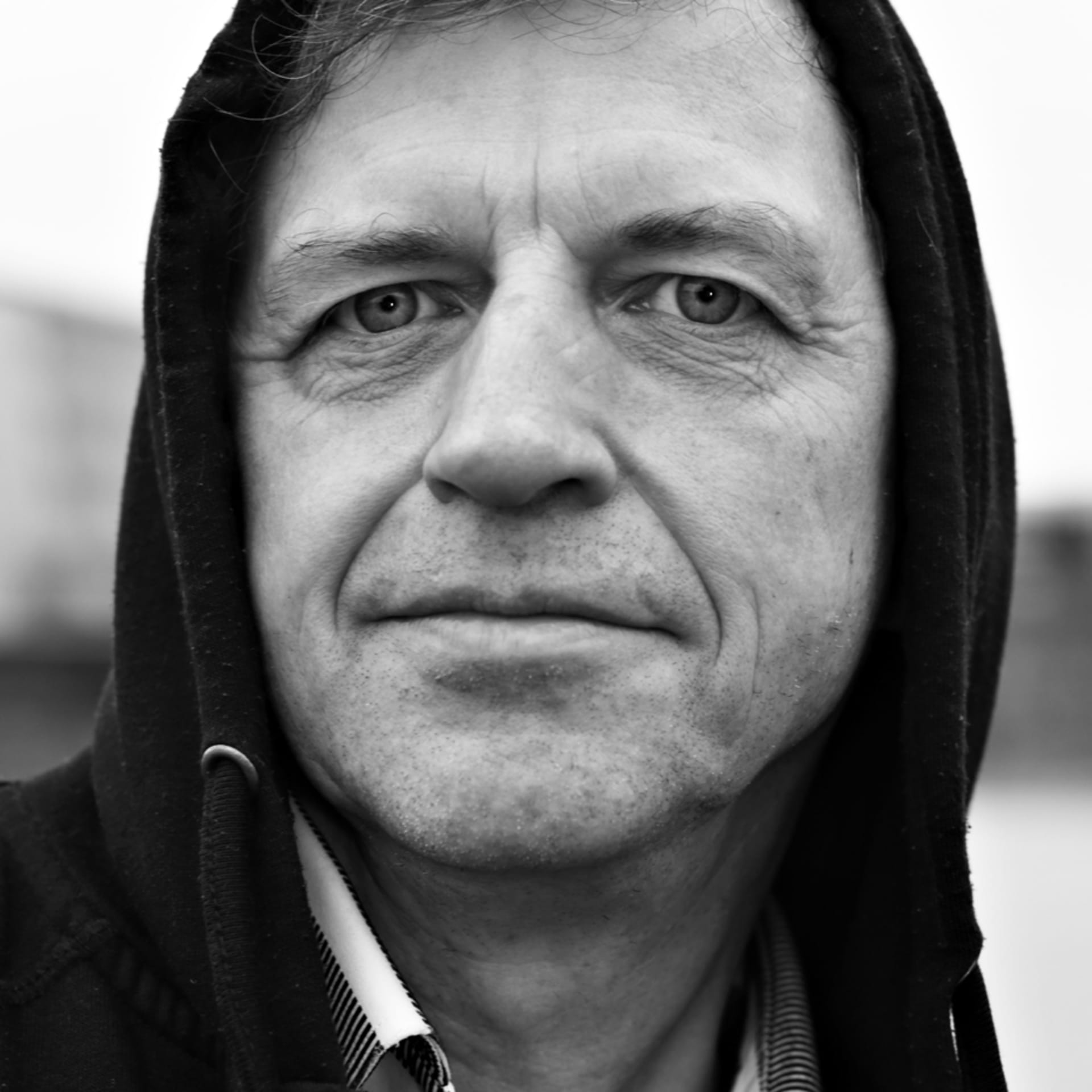
“Looking for trouble in West Berlin” Wolfgang Müller on Punk and Swastikas
Picture: Scene taken from The Life of Sid Vicious by Wolfgang Müller
As the initiator of the avant-garde music project Die Tödliche Doris (Deadly Doris), Wolfgang Müller ranks among the key protagonists of the West Berlin post-punk movement of the eighties. Today he is an artist, a chronicler of contemporary art and an agent provocateur. In 2010, his Gays against Guido button—scathing gay German foreign minister Guido Westerwelle—continued his punk legacy. In this monologue, part of a series of artists and other key cultural figures speaking openly about their artistic experience in Berlin, Müller tells us about his film The Life of Sid Vicious and the productive usage of swastikas in the eighties. NOTE: Electronic Beats promotes the freedom of artistic expression and intent—never fascism or hate.
Two years after Sid Vicious overdosed on heroin, Nikolaus Untermöhlen (Die Tödliche Doris member) and myself became inspired by Max Müller’s idea and made The Life of Sid Vicious into a film. The male lead is Oscar Dimitroff, a two-and-a-half-year-old who is looking for trouble in West Berlin, wearing his hair short, sporting a swastika on his shirt and carrying a knife—just in case. The super-8 film wasn’t met with much enthusiasm from the alternative left; they didn’t appreciate or understand punk’s reversal of right wing symbolism. The punk scene, on the other hand, saw it as provocation and complained indignantly: their hero portrayed by a child! The ten minute short film turned into a scandal and led to heated discussions. In 1981, a Sid Vicious biopic with child actors made Die Tödliche Doris the focus of absurd attention.
In post-war Germany, it was the punks who first—and most pointedly—used Nazi symbolism and the Hitler taboo to establish disrespect. The very first Hitler comedy made in Germany, Blutige Exzesse im Führerbunker (Bloody Excess at Führerbunker) by Jörg Buttgereit, premiered in 1982. In the film, Buttgereit wears a Hitler mask he’d bought in England. There is one scene where he turns to the camera in this mask and says, “The younger people among you may not recognize me any more …” I thought that was great. Mind you, it was less about de-tabooing Nazi symbolism than it was about demystifying it and generally railing against the repression of the past.
Sid Vicious and his swastika shirt provoked the hidden Nazism in the uptight middle class. Maybe he should’ve worn that shirt in West Berlin first, not Paris, as he did in The Great Rock’n’Roll Swindle. But our film The Life of Sid Vicious made up for that. Pseudo naive and simple-minded, we re-enacted his tragic life with kids performing Sid and Nancy—including the drug abuse. Our protagonists dwell in a somewhat rotten apartment with pizza cartons, cigarette butts and empty bottles everywhere. That is, of course, staged, but it’s very hard for the viewer to keep their emotional distance. At one point during shooting, Oscar started crying and we used that shot for the scene after Sid had stabbed Nancy. I find it just as touching today as I did when I first watched little Oscar grabbing for the camera with tears in his eyes.
Today, Nazi symbolism can be found in many contexts, it’s almost pop. People like Jonathan Meese may think it revolutionary to scream “Heil Hitler” at his audience, but it’s missing the subversion. Maybe it’s Nazi-pop already? When he accepted the B.Z. award for culture in 2008, there was no irony, no subversion or provocation, only him playing the jester on stage. His “provocation” was to call art students “haemorrhoids clinging to government’s arse”, as he did that during a documenta talk. For him—the former art student—there was no risk involved. His abuse merely mirrored and reproduced existing hierarchies.
It is fitting that former secretary of state Guido Westerwelle collects Meese’s art; he, a personality who doesn’t feel involved in collective structures or ignores them outright, thinks he can denote infinite freedom through buying art. But his world of success, his liberal utopia where his homosexuality doesn’t feature and everything is his hard-won accomplishment, doesn’t exist. When still in the closet, Westerwelle had to silently endure Franz Müntefering, then vice-chancellor, expressing his homophobic vision: he said he already saw Westerwelle swinging Thatcher’s handbag.
The misconception that we’ve already reached the end of emancipation because gay and lesbian people, women and non-Aryan Germans work in politics, television or in professional sports, is precisely described by Matthias Mergl in his book Resistance and Utopia in Individualistic Neo-Liberalism – The Terror of Ease. This new post-political individualism is effecting a very strange shift in public perception: exclusions are rendered invisible by referring to their apparent sublimation, thus burying them in an even deeper stratum of society. What goes unmentioned engenders a new terror of official suppression. Only when we point out the banal and the ignored does reality become perceivable. Only by challenging apparent agreements and by oscillating between positions, do we render the real world visible. This is the central task of art. In our society, where self-fulfilment is a dogma, the artistic study of misunderstanding is a vast field. And as a researcher of sociological misapprehension, that’s what I do. ~
Read our evolving archive of Berlin’s musical history by visiting our Berlin Experiment page.
Published June 11, 2014. Words by robertdefcon.
